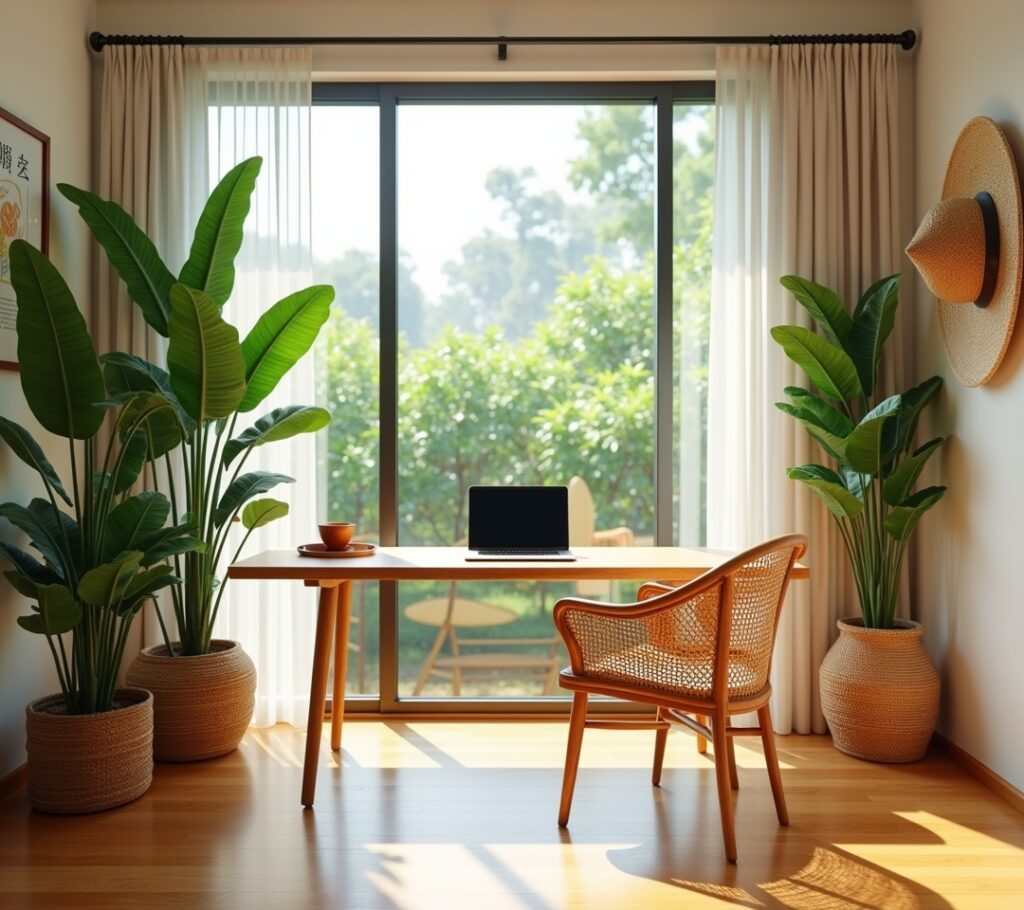Did you know that 73% of remote workers in Southeast Asia struggle with creating an effective workspace at home? I definitely was part of that statistic when I first started working from my tiny apartment in Ho Chi Minh City back in 2019!
Setting up a home office space in Vietnam comes with unique challenges that most Western productivity blogs just don’t cover. The humidity, limited space, and let’s be honest – the occasional power outage – all play a role in how we design our workspace. After three years of trial and error (and way too much money spent on equipment that didn’t work), I’ve finally cracked the code on what actually works in our tropical climate.
Battling Vietnam’s Climate: My Expensive Lesson About Humidity

Oh man, where do I even start with this one? My first home office setup was a complete disaster because I ignored the obvious – Vietnam’s humidity levels can destroy electronics faster than you can say “monsoon season.”
I learned this the hard way when my expensive mechanical keyboard started acting up after just two months. Keys were sticking, and eventually, some stopped working altogether. Turns out, I needed proper ventilation and moisture control in my workspace, not just a fancy desk setup.
Here’s what actually works: invest in a good dehumidifier for your office space. I use a small one that keeps the humidity around 50-60%, which is perfect for both comfort and equipment longevity. Also, silica gel packets became my best friend – I keep them in drawers and near sensitive electronics.
Space Optimization: Making Magic in Small Vietnamese Apartments
Most apartments in Vietnam aren’t exactly known for their spacious layouts, right? My current place is about 35 square meters, and I had to get creative with my home office design to make it work without driving my partner crazy.
The game-changer was going vertical instead of horizontal. I installed floating shelves above my desk and used wall-mounted monitor arms to free up desk space. This approach maximized my small area while keeping everything organized and accessible.
One trick that really helped was using a folding desk that I could put away when not working. It sounds simple, but having that physical boundary between work and home life made such a difference in my productivity and mental health.
Power Solutions: Dealing with Vietnam’s Electrical Quirks
Let’s talk about something nobody warns you about – the power situation! Vietnam’s electrical grid can be… unpredictable, especially during storm season.
I invested in a UPS (Uninterruptible Power Supply) after losing three hours of work during a sudden blackout. It was frustrating beyond belief, and I promised myself it would never happen again. The APC UPS systems work great here and give me enough time to save my work and shut down properly.
Also, get a good surge protector designed for Vietnam’s voltage. The cheap ones from the electronics markets don’t always protect your equipment properly during voltage spikes, which happen more often than you’d think.
Lighting and Ergonomics: Lessons from My Aching Back
Vietnamese apartments often have interesting lighting situations – either too dim or harsh fluorescent lights that make your eyes hurt after a few hours. I spent way too much time working in poor lighting before realizing it was affecting my productivity and mood.
Natural light is your best friend, but you need to be smart about it. I positioned my desk perpendicular to the window to avoid glare on my screen while still getting good ambient light. During the darker months, I added a desk lamp with adjustable brightness – it made such a difference!
The ergonomics piece took me forever to figure out. Vietnamese furniture isn’t always designed for long hours of computer work, and I ended up with serious back pain after my first month of remote work. Getting an adjustable chair and a laptop stand was probably the best investment I made for my home office setup.
Tech Setup: What Actually Works in Vietnam’s Environment
Technology choices matter so much more in Vietnam’s climate than I initially realized. Not all gadgets are created equal when it comes to handling heat and humidity!
I recommend going with electronics that have good heat dissipation. My laptop runs much cooler with a cooling pad, and I learned to avoid placing electronics directly against walls where heat can build up. Good airflow around your equipment is crucial for longevity.
Internet connectivity deserves its own mention – having a backup mobile hotspot saved my butt more times than I can count. Viettel and VinaPhone both offer reliable data plans that work well as backup options.
Making It Work: Your Vietnamese Home Office Journey Starts Now
Creating an effective home office space in Vietnam isn’t just about copying what works in other countries – it’s about adapting to our unique environment and challenges. Every setup will be different based on your specific needs, budget, and living situation.
Remember to prioritize climate control, invest in quality surge protection, and don’t underestimate the importance of good lighting and ergonomics. These fundamentals will serve you well regardless of how your space evolves over time.
Your home office journey is personal, so feel free to experiment with these ideas and make them your own. Just remember to protect your equipment from humidity and always have a backup plan for power outages!
Want more tips on productivity, workspace design, and navigating life in Vietnam? Check out more articles on Chou Iu where I share my ongoing adventures in remote work and life optimization.



Pingback: My Vietnamese Cooking: From Epic Pho Disasters to Master